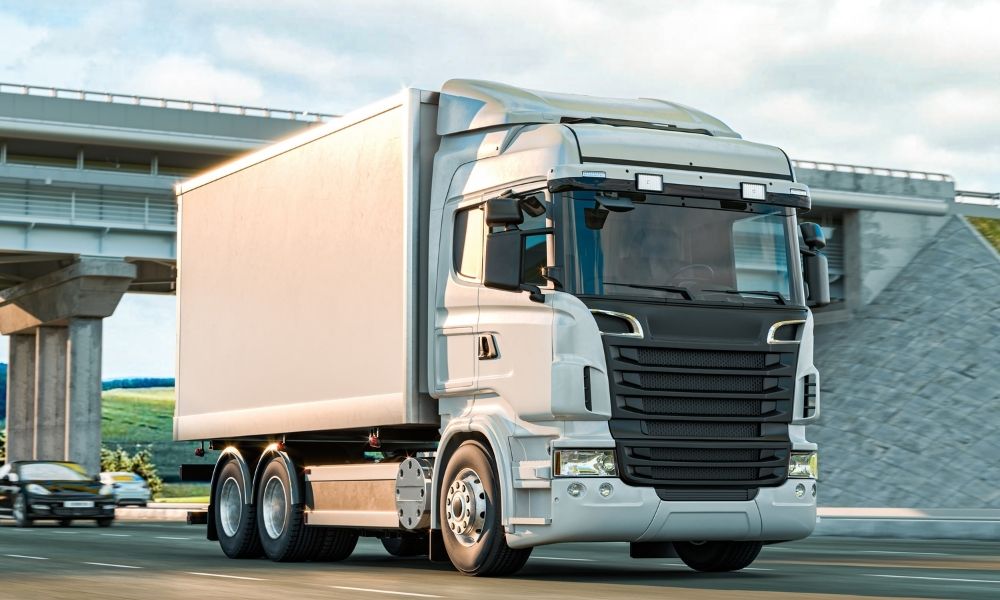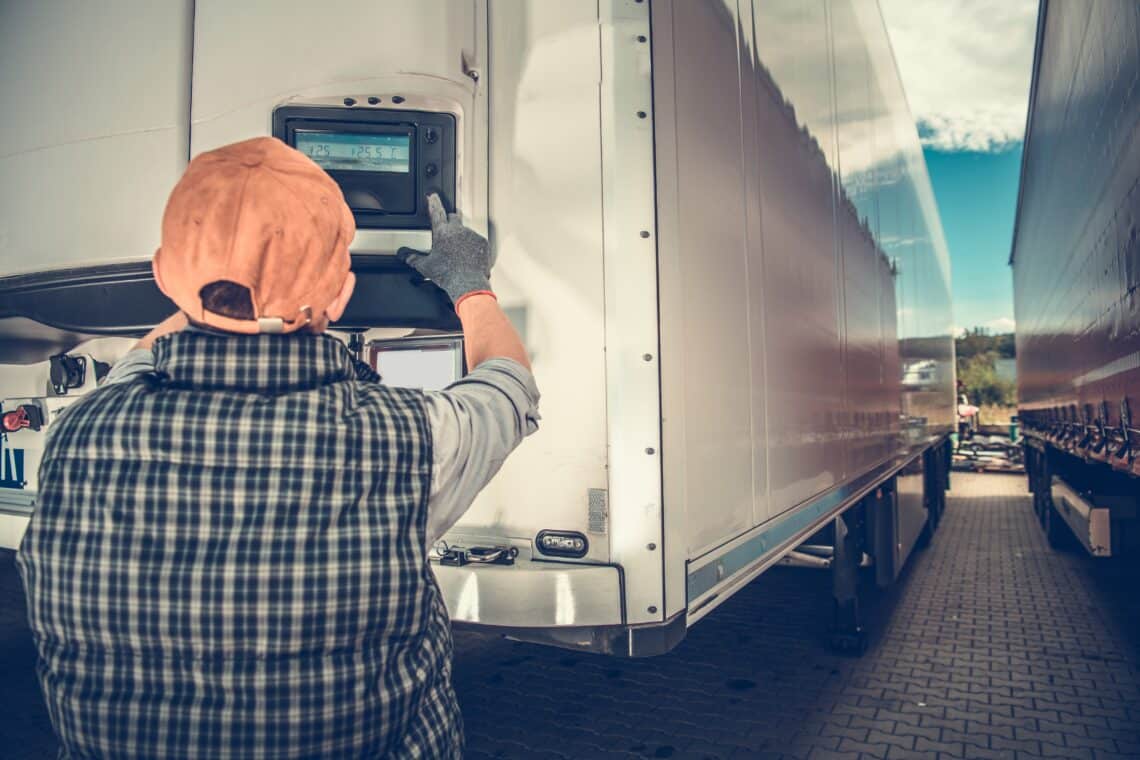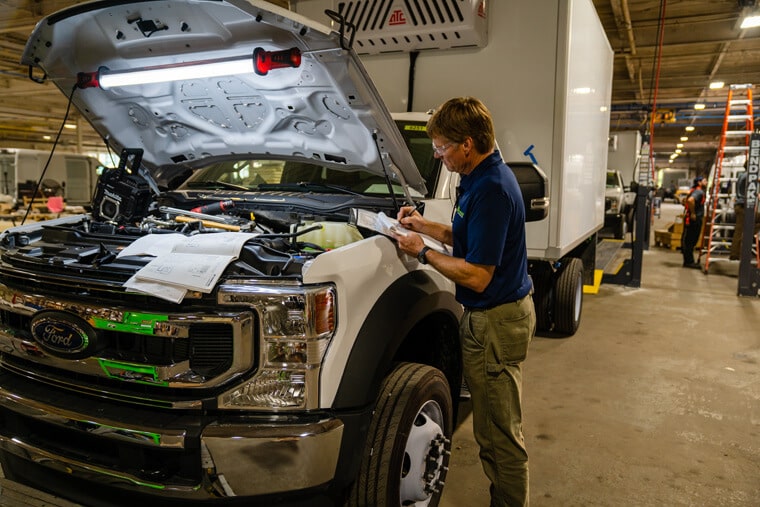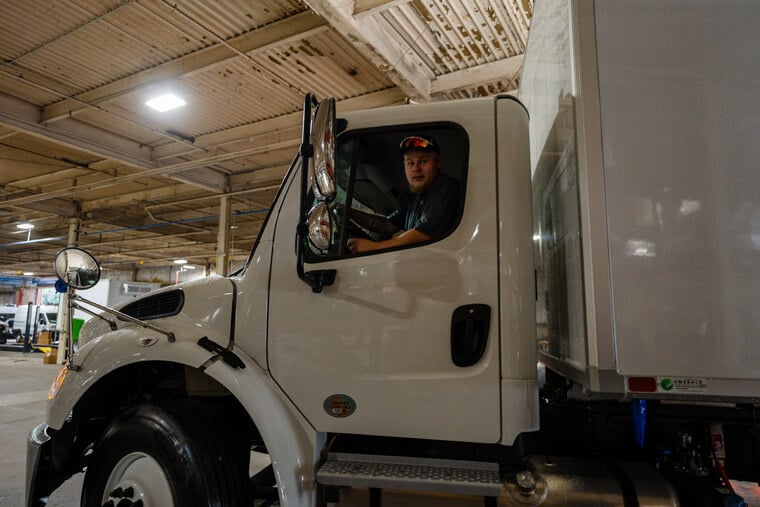
5 Benefits of Side Doors on Refrigerated Vehicles
Joe Dickman | October 14th, 2025
The features and functionality of your refrigerated truck or van can make or break your cold chain logistics. Poor insulation or air loss can cause perishable items like seafood, meat, or pharmaceuticals to degrade, putting customer health at risk or leading to waste that impacts the bottom line.
While there are several components you can leverage to maintain consistent temperatures during transportation, like remote temperature monitoring and strip curtains, one often overlooked component is doors. More specifically, side doors.
Unlike their rear counterparts, side doors enable your fleet to load and unload cargo more efficiently, particularly for multi-stop routes. There are also several other benefits to leveraging this functionality, which we will cover in this blog.
1. Makes Loading and Unloading Easier
You won’t always have your truck cabin filled to the brim with products. For smaller and quicker deliveries, you may only need to reach a small section of the interior to load and unload goods. A side door makes it easier for your fleet to access what they need quickly. With faster unloading times, your fleet can make more deliveries.
There’s also the added benefit of keeping temperatures inside the truck or van stable. Since the driver is only accessing one section of the truck, it keeps the rest of the vehicle undisturbed. This type of loading is beneficial when you have different customers staged in various zones of the truck or van.
2. Adds Flexibility
Sometimes deliveries must be made in narrow spaces or in areas where it’s impossible to unload through the back. A side door provides your fleet with more alternatives, allowing you to deliver to almost any place without fear. This is a nice-to-have for fleets with multiple stops in urban environments.
Trucks and vans with side doors can also be retrofitted with several step-up choices that enable delivery personnel to easily enter from any side, such as a recessed step well, pull-out step, and stirrup step. With more flexibility, your fleet can deliver to more locations more efficiently.
3. Reduces Air Loss
Every time a door opens, air seeps out, putting your perishable products at risk and adding stress to your refrigeration unit as it works harder to maintain stable temperatures. Leveraging side doors is an excellent cold chain strategy to keep cold air in, extend your vehicle’s life span, and enhance fuel efficiency.
Side doors are adept at reducing air loss for two reasons. For one, they’re a lot smaller in size compared to doors located at the rear of the vehicle. This means less air seeps out during deliveries. The second is that side doors make it easier to access the product, leaving the remainder of the vehicle untouched.
When paired with other cold chain strategies, like strip curtains or interior bulkhead dividers, the efficacy of side doors increases. With more stable temperatures, your refrigeration unit consumes less fuel to maintain the optimal environment for your goods.
4. Improves Driver Safety
Deliveries in urban environments can often be dangerous for drivers. Think of a roadside delivery. If the driver is exiting from the back, they can be exposed to active traffic while unloading, which can put them at risk of injury due to reduced visibility.
In contrast, a side door is a lot safer for a driver. The position of the door protects them from passing cars that could collide with the rear of the truck or van. This solution enhances worker safety compliance and reduces workplace injury incidents.
Another aspect of side doors is that they are typically closer to the ground, reducing the amount of strain drivers are exposed to. Rather than having to climb stairs with a rear door arrangement and potentially slipping and falling, the side doors make ingress and egress easier and less tiring, improving driver satisfaction.
5. Enhances Zoning Management
For mixed-goods fleet operations, such as food distribution or national grocers, utilizing side doors can be extremely beneficial. It makes it easier to segment parts of the truck or van based on the customer, making it faster and easier to distribute products along a multi-stop route.
However, side doors truly shine for fleet operations that use multi-temperature vehicles for hauling goods on short and long hauls. Modern refrigerated vehicle bodies can be portioned into sections with each compartment featuring its own side door, greatly reducing temperature variance during deliveries.
For fleets that deliver mixed product types, the use of side doors has become indispensable to ensuring quality and efficiency.
Selecting the Right Side Door for Your Operations
Different types of side doors have their advantages and disadvantages when it comes to loading and unloading. And when it comes to options available, there are generally two types to choose from: swing doors or roll-ups.
Swing Doors
Swing doors typically come in single or double varieties. They typically open outward like a regular door and usually offer a generous opening that makes unloading bulky items easy. The benefit of this design is that it allows for maximum height clearance within the box.
Another benefit of this option is that they can be outfitted with thicker insulation to further protect the temperature of your cargo. The cons, however, are that they require significant clearance to function. This can present a hurdle in cramped urban environments.
Roll-Up Side Doors
Roll-up side doors operate similarly to a garage door. Instead of swinging out and taking up clearance space, they roll upward on a track. This makes it easier to operate in tight urban environments, such as establishments with alley access.
However, unlike a swing door, a roll-up door can’t be fortified with extra insulation. This means your goods are also at risk of temperature variance, as air loss is common with this setup.
The other tradeoff is the entryway. Due to the space occupied by the roll-up design at the top of the opening, the staff entryway is shorter than that of a swing door, making it more challenging for staff to unload bulky items that require higher clearance.
Investing in Efficiency and Safety
Like all fleet investments, deciding on side doors is all about evaluating the unique needs of your fleet, cargo, and customers. Side doors are ideal for fleets that deliver a variety of goods with varying temperature requirements, particularly those with multi-stop deliveries. They’re more efficient and safer when compared to their rear door counterparts.
If you’re unsure about what is best for your organization or would like to discuss specific features and functionalities, working with a proven refrigerated vehicle partner can provide the insights you need to make an informed decision. The proper design can help ensure that your perishable cargo gets delivered swiftly, safely, and at the right temperature.
At Emerald Transportation Solutions, we’ve been helping companies achieve the right configuration for their fleets for decades. Reach out to one of our specialists to learn more about our inventory, financing options, and customization capabilities. Or if you’re looking for more insights read our latest guides:
- What You Need to Know Before Buying a Refrigerated Vehicle
- How to Customize a Refrigerated Truck or Van
- The Different Types of Refrigerated Vans
- Editor’s Note: This blog was originally published in August 2021 and has been updated for comprehensiveness in October 2025.
Related Articles
Contact Us
Feel Free To Contact Us If You Have Any Questions
What does under DOT mean?
Questions regarding DOT requirements come up often. 10,000 lbs GVW (gross vehicle weight) and over are commercial vehicles that fall under the Department of Transportation regulatory requirements.
What is the difference between GVW and payload?
GVW or Gross Vehicle Weight is the entire weight of the vehicle including the payload. The payload weight represents the amount of cargo you are hauling.
What is a self-powered unit and a vehicle-powered unit?
A self-powered unit has its own fuel source and will run independent of the truck. This is the heaviest and most expensive option. While vehicle-powered units run off the engine via a compressor mounted on the engine. These are less expensive and lighter in weight but you must run the truck or plug the electric standby into shore power.
What does K-factor mean and why is that important?
K-factor is a term that stands for the overall insulating value of the container (truck body). Quite simply the lower the K-factor the better the truck body will be able to maintain a given temperature and require less energy to do so.
How much lighter is a Poly Van vs a US spec body?
Poly Van bodies are very light. On average we estimate we are 75-150 lbs per foot lighter than a traditional sheet and post foamed in place body. These weight savings translates to less fuel burn and less CO2 emissions, along with added payload, the most important benefit.






